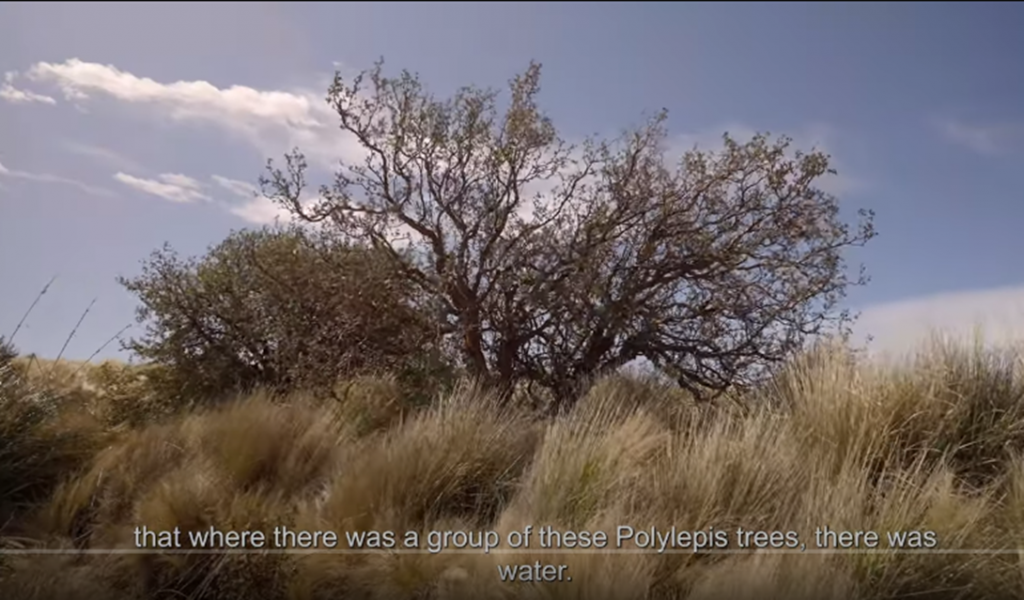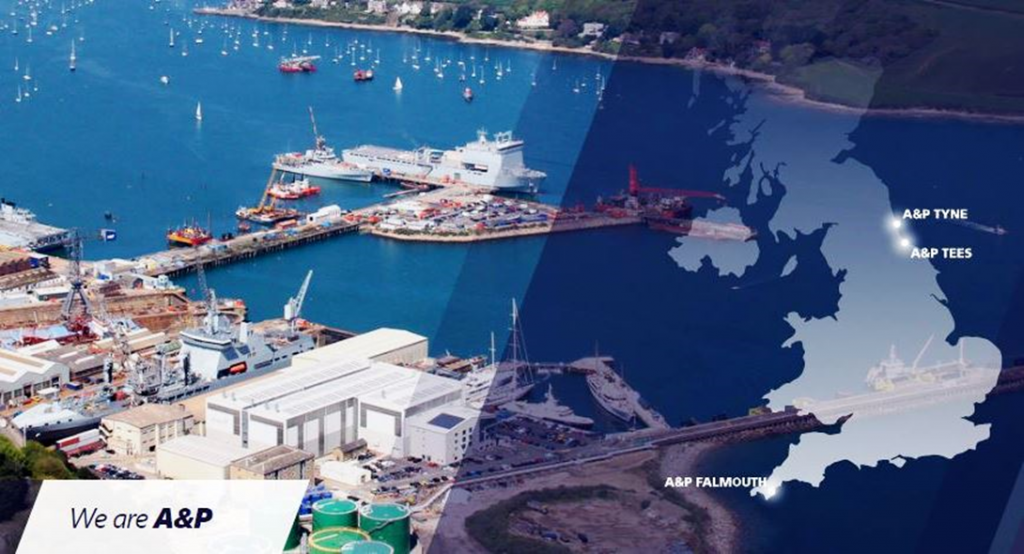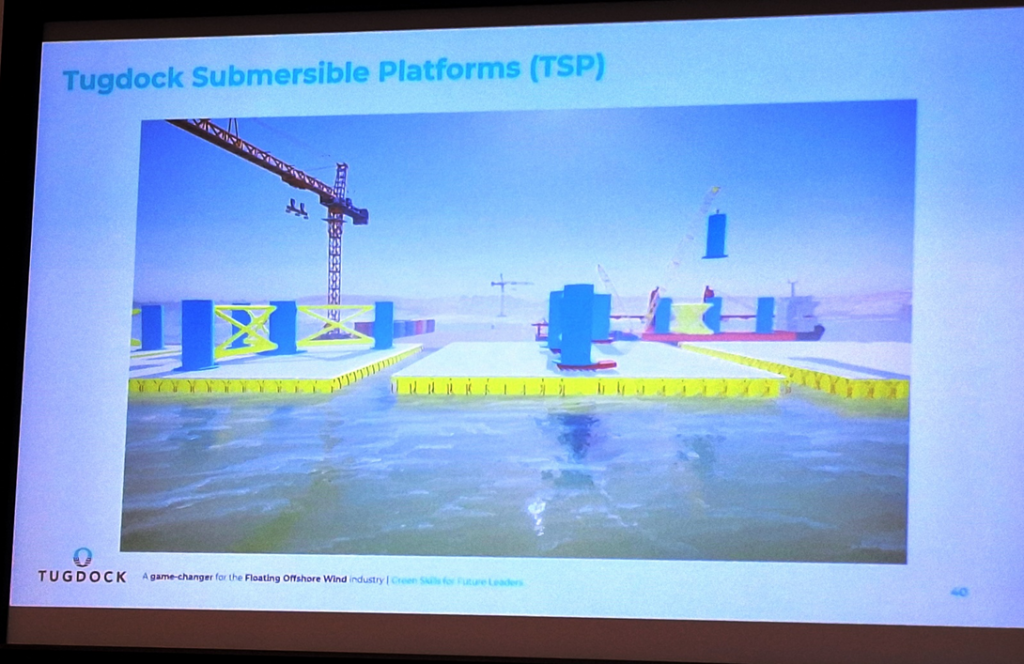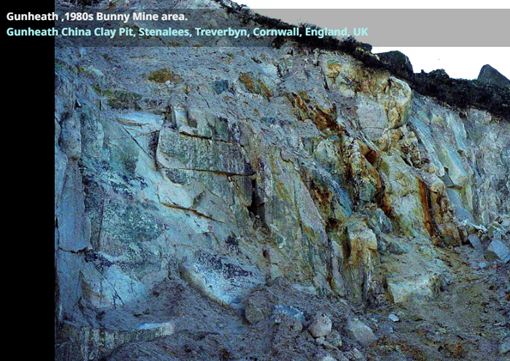15th March
A quick look at Levelling Up leads into stories with a maritime flavour – Floating Wind, Rotor Sails, Docks, Seaweed and (yet again) HVO!
Let me begin with a correction. Last time I wrote that Accion Andena had shared the aspiration to plant 10 million new trees in the Andes. No sooner had Abby read my post than she emailed this …
Dear Caroline, I want to quickly say thank you for what you’ve written. We always appreciate a shout-out! The only thing I would change is that we don’t plan to plant 10 million trees — we already have planted about that many!
Here is another video that we just released if helpful. More soon. Thank you again for your support.
Please do not skip! This video is again outstanding in its quality, the example it gives us all. It embraces whole communities, old and young, male and female, getting involved in the tree planting. This is something I think we might bring into the Inti Raymi Festival project in May and June, which – fingers crossed – seems to be progressing for Pensilva on the eastern edge of Bodmin Moor. They probably need trees there too, perhaps even this kind would work?! I would love to arrange for planting and have it included in the Forest for Cornwall developments. That would really feel like a good connection with Accion Andena!

Soon after this image they mention the Queuna Raymi Festival of Tree planting
Here is what Wikipedia says about the uniqueness of the trees:-
The tree named Polylepis (but known as Queuna in Peru) is, in fact, derived from the Greek words poly (many) plus letis (layers), referring to the shredding, multi-layered bark. This bark is thick and rough and densely layered for protection against low temperatures. Some species of Polylepis form woodlands growing well above the normal tree line within grass and scrub associations at elevations over 5000 m; which makes Polylepis appear to be the highest naturally occurring “arboraceous angiosperm” genus in the world.
And one more quote from the video – It is key that each country exchange the way in which we can achieve success! It is a spirit that makes us feel like family with no borders, no specific country; a family of communities with a common goal which is to re-forest and extend the life of the planet.
Couldn’t agree more.
News Headlines Today

As it happens this has been back on Meadow Barns agenda, because yesterday I travelled to Penryn Campus for another Exeter university event, funded by Levelling Up £s. Was there a panic? A bit, yes. I think it is not an exaggeration to say there is a sense of mild desperation, to get the projects up and running and money going out. This event was to launch an initiative offering improved training for staff and leadership skills in the renewables sector. 2 of the 3 guest speakers were involved in businesses to deliver FLOW – Floating Off-shore Wind in the so-called Celtic Sea. We have mentioned this before, but just in case here is the definition and map:-

The Celtic Sea is the area of the Atlantic Ocean off the southern coast of Ireland bounded to the north by Saint George’s Channel; other limits include the Bristol Channel, the English Channel, and the Bay of Biscay, as well as adjacent portions of Wales, Cornwall, and Brittany.
Back a couple of years, the Regen webpage explained
Despite the competition, developers will have to work together, with the UK and Welsh governments, The Crown Estate, National Grid and regional stakeholders to ensure that project delivery is a success. That will require significant investment in grid infrastructure, port facilities and regional supply chain capability.
This leasing process must be matched by a strategic plan for ports and grid infrastructure. Work in these areas is already underway; next week we expect National Grid ESO to publish its first pass of a Holistic Network Design (HND) for offshore and onshore grid infrastructure. We will have to wait, however, until 2023 to see an updated version of the HND which encompasses the new 4 GW of Celtic Sea leases.
The Crown Estate’s leasing strategy is likely to result in the award of gigawatt-scale projects. The strategy also however includes support for a phased build-out, or ‘stepping stone’ approach, starting with 300 – 400 MW scale projects. This is a critical first step to enable regional ports and supply chains to scale up and ensure that there is an opportunity to drive down costs through learning and innovation. To make this approach work, developers will need to engage with regional partners, and industry, to fully develop their supply chain plans.
The indication, given by The Crown Estate, that there is scope for up to 20 GW of future floating wind capacity within the Celtic Sea area also sends a very important message, that should go some way to assure investors of the region’s long-term potential.
Since then, I am sure I read that there was a reluctance to bid for the leases. This is the most recent info I can find:-
The Crown Estate held a Bidders Day in Swansea on 31 January 2024 for the Celtic Sea Floating Offshore Wind Farm, where it provided further information about the tender process to prospective bidders.
Interested bidders must register via the portal and reply to the contract notice included in the tender process.
The Crown Estate now aims to provide final decisions for the three project development areas by March 2025, rather than in the second quarter as previously advertised.
Launch Process
The contract notice will be published via the Find a Tender service on 28 February 2024, with potential bidders required submit an expression of interest to receive a notification on publication of the contract notice.
First presentation
This was given by Drystan Jones of the company that owns and operates Falmouth Docks. They are called A & P and have 2 other docks, in the Northeast.

It was a lively, positive presentation explaining a huge new investment of over £12m – of which 50% is government money (but no mention of it being from Levelling Up) – in order to move the operations away from dependence on diesel and over to more of an electric ‘Shore-Power’ system.
Drystan also told us about the many trials of alternative fuels, which are now happening in the maritime sector. As you would expect, I asked him right away ‘do you use HVO?’ And he said, ‘funnily enough we just added another tug to our fleet, which came from Merseyside already full of HVO. I’ve been pleasantly surprised by the performance and love the fact there is no smell with it! We are planning to keep going down this route and have started talks with John at Mitchell and Webber.’
Another fascinating topic he told us of was ‘Rotor Sails’ being added to boats as a means of reducing diesel consumption.
Rotor Sails, traditionally known as Flettner Rotors, were first installed on ships in the 1920s after being invented by Anton Flettner. At the time, the technology was not widely adopted due to the rising popularity and low cost of diesel fuel. Now, 100 years later, this wind technology has garnered new interest in its ability to help lower emissions. Wind power is a safe, sustainable way to propel modern merchant ships.
They don’t look like sails at all, more like old fashioned chimney tubes!

He moved on to describe the benefits of cruise liners, for bringing high numbers of visitors to Cornwall with no impact on the roads or housing stock. This year the MSC Virtuosa may deliver as many as 5,000 people, which is crazy isn’t it? Where do they all go and what do they do for their few hours on shore?
Last but top priority on Drystan’s list was telling us the up to date position and future for Floating Offshore Wind. https://www.ap-group.co.uk/sectors/renewables
His team are hoping that Falmouth will be the first place in the UK to put out two giant off shore floating turbines. They plan to install them on the Wave Hub site at Hayle and are pressing ahead, without a moment to spare. But the logistical challenge is huge. Each turbine is roughly the same size as the Eiffel Tower, e.g. over 300m high. To manage the massive blades many areas of the dockside have to be cleared of existing structures and means must be found to transport the assembled turbines to the final location. This is where a really clever new design of pontoon, called a Tugdock, will come into its own.
A Tugdock is a simple concept really, but it is expected to be a game-changer for FLOW, dreamed up by Lucas and his colleague, who are based in Falmouth and St Ives. I predict it is going to make them very wealthy indeed, one day. Dragons Den eat your heart out!
The descriptions of how Tugdock operates on their website are complicated. In a nutshell you have a series of inflatable cylinders, which are combined and held within a modular, submersible frame and can be bolted together to make the big size areas required. They are easy to transport, can be assembled quickly and disconnected again for removal or changing position. The result is an enormous increase in working area, for the docks. https://tugdock.com

Lunchtime discussion and departure
Interesting as the morning session proved to be, my major reason for going to Penryn was to connect with the leader of the mining strategy, and manager of the associated budget from Levelling Up. While enjoying the lunch snacks together we were able to achieve a very good catch-up, from which I am much clearer on what might come next. That is for another day!
Leaving Penryn early afternoon, for my drive home I decided to test out the new section of A30 road. But before getting onto it I stopped by at the Mitchell and Webber depot, for another chat with John. I was so impressed to discover a new Rayburn heater, for his showroom, and of course running on HVO. This has suggested a new option for me, once the Biomass boiler has come out of the Renewable Heat Incentive scheme in a year or 2, that I might try to revamp or replace it with an HVO space heater.


End Story
Arriving home I was sorting through emails and came upon this, as a suitable story to complete the oceanic theme. It is a little snippet about a seaweed farming proposal on the North Coast, which has got many people fired up, including Martin Clunes!
The application comes from Biome Algae and Camel Fish and was reported by Cornwall Live on 15th February. I don’t quite get why the response is so very negative? We have lots of ropes with seaweed being farmed in Par Bay and nobody is any the wiser. I am not aware of any extra lights or floats being visible from the shore. However, I did note the point being made, that the impact of severe Atlantic gales could possibly end up shredding the ropes on the coast at Port Quin.
The company which was forced to withdraw a scheme for two giant seaweed farms at a Cornwall beauty spot in the face of mounting opposition and local anger (last year), is now looking to do the same on the north coast. Biome Algae and The Carbon Sea Garden originally filed two applications with the Marine Management Organisation for two 55-hectare seaweed farms in Gerrans Bay off the Roseland Peninsula.
Had the scheme been approved, the two seaweed farms the size of 176 football pitches, complete with navigation lights on the corners of the site and 9,400 floats, would have been erected in sight of tourist hotspots Portscatho and Portloe.
At the time, marine biologist Dr Angela Mead, founder of Biome Algae, said aquaculture is a tried and tested ‘farming’ model with seaweed being a versatile source of food, animal feed and even fuel. However Biome Algae and The Carbon Sea Garden later withdrew their respective applications as hundreds of people, local residents, tourism businesses and the local MP waded into the debate and opposed the project.
Angela Mead’s most recent statement about Port Quin says “We will add positively to the local economy, provide career opportunities and support education. It has been demonstrated that sustainable seaweed farming helps restore our marine environments. The seaweed itself has great potential to address a number of pressing planetary issues such as replacing oil-based plastics, food security and net zero.”
This is one of those topics I feel may be suffering an over-dramatic response. But I don’t know enough of the facts, so will need to explore in greater depth. Here is a source, for now
Do let me know, what is your opinion on this?





